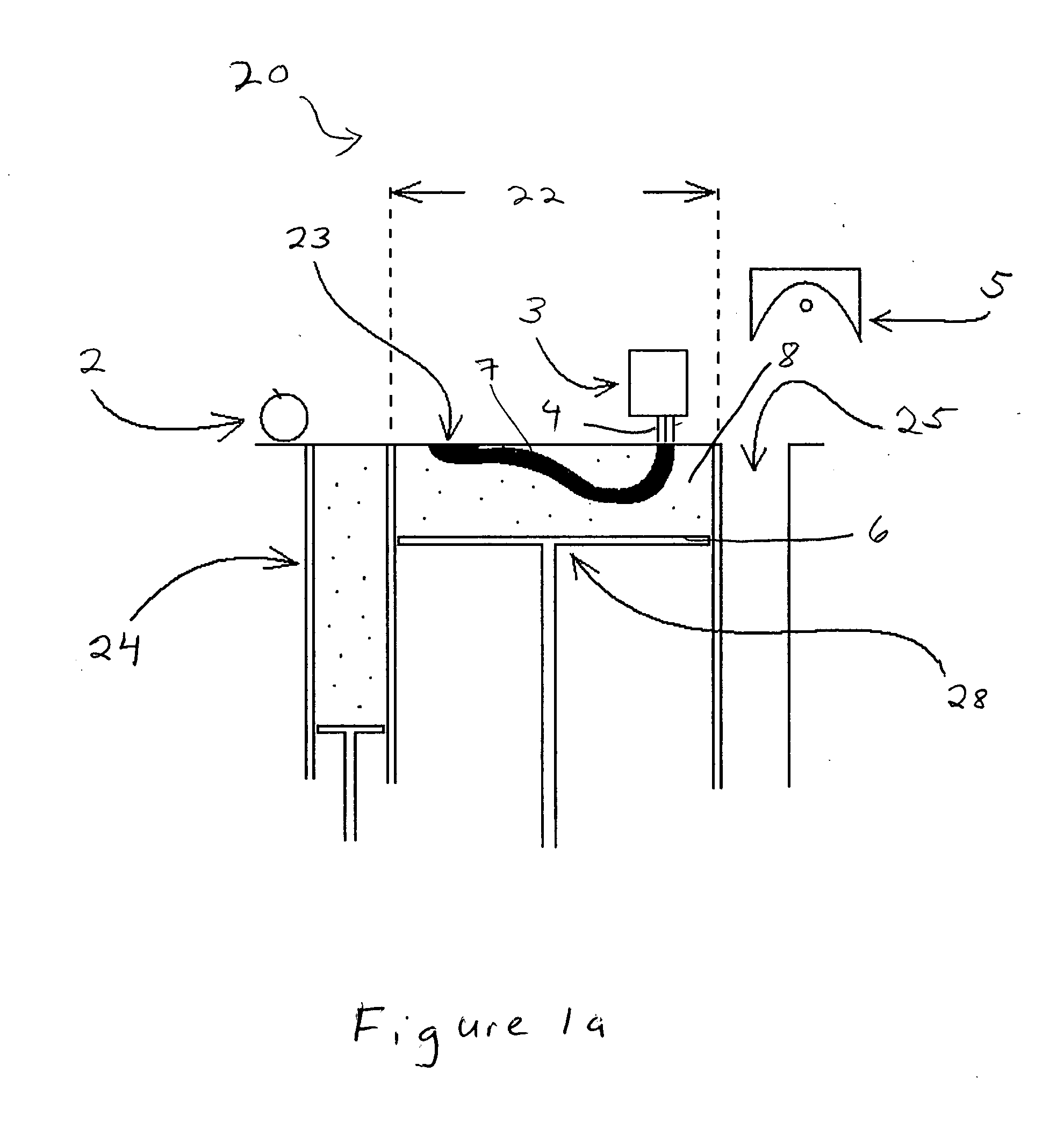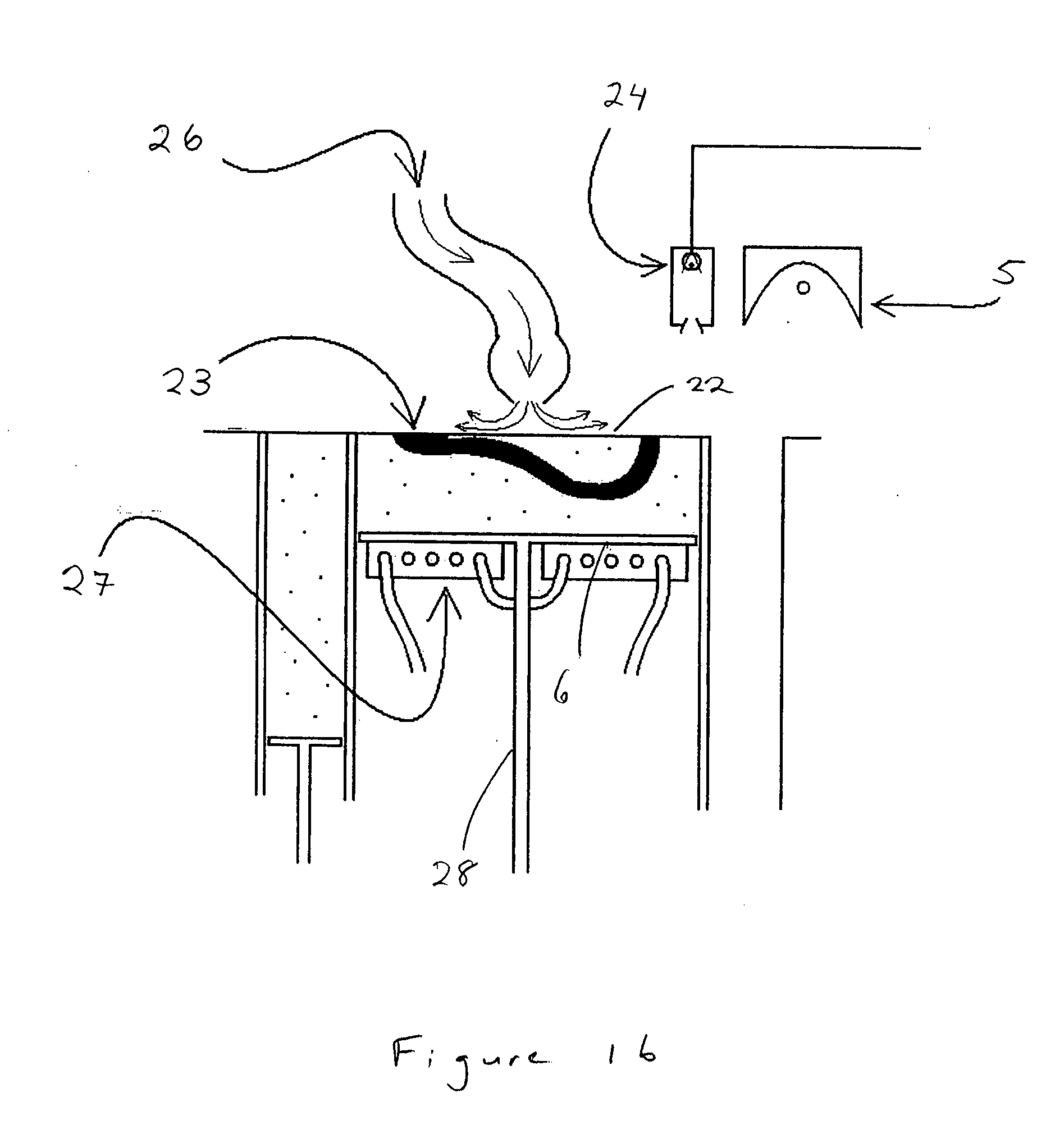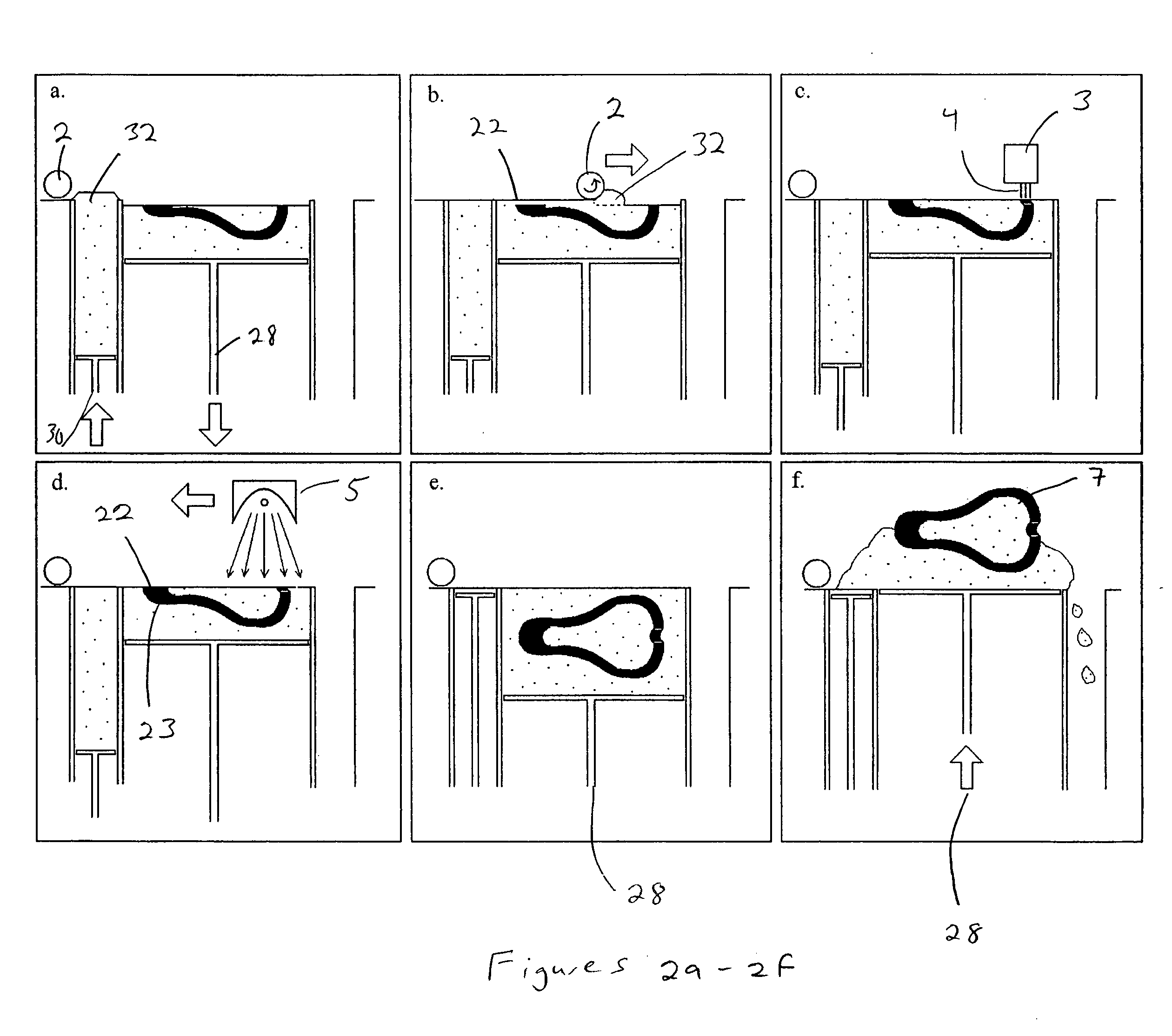Production of three-dimensional objects by use of electromagnetic radiation
a technology of electromagnetic radiation and three-dimensional objects, applied in the direction of additive manufacturing processes, electrographic processes, instruments, etc., can solve the problems of sls processes typically having the disadvantage of requiring a focused laser beam, lasers, operating as energy sources, and relatively poor mechanical properties of prototypes, so as to reduce contraction or expansion
- Summary
- Abstract
- Description
- Claims
- Application Information
AI Technical Summary
Benefits of technology
Problems solved by technology
Method used
Image
Examples
example 1
[0249] Production of a tensile specimen using polyolefin based composition.
[0250] Using the apparatus described above, a tensile specimen was made using a dry free-flowing particulate composition containing 17.0% of polypropylene (Microthene FP-8090 average particle size 20 μm) and 83.0% of aminosilane-modified glass beads (Potters Industries 3000E) as a build material. The absorber was zb®56 binder from Z Corporation containing 2.0% solids by weight of chemically modified carbon black (Cab-O-Jet IJX352B). A total of 16 layers were printed, and each layer in turn was irradiated by a 500-watt tungsten-halogen lamp (5″ length) that traveled over the build area at a speed of 17.7 mm / sec. Layer thickness was 0.10 mm and volume fraction of the absorber fluid was 0.19.
[0251] Final part had tensile strength of 5.76 MPa and elongation at break of 4.5%
example 2
[0252] Production of a tensile specimen, a flexural strength specimen and a 50-layer thick part using thermoset epoxy containing inert filler.
[0253] In this example, the build material consisted of 29.6% granulated epoxy: Everclear® EFC500S9 from Dupont, and 70.4% by weight of 75 μm diameter glass beads (Potter Industries 3000E grade). Absorber fluid, volume fraction of the absorber fluid and build layer thickness and were the same as in Example 1. The tungsten-halogen lamp used in Example 1 was traversed over each printed layer at a speed of 20.3 mm / sec. At the completion of the build process, the partially bonded object was removed from the surrounding unbound material and heat-treated in the convection oven for 2 hours at 95 Celsius. After heat treatment the flexural strength of the material was 54 MPa; tensile strength 35 MPa, elongation at break 2.2%. A 50-layer part had good dimensional stability but had issues with caking (build material from the unprinted areas melted on th...
example 3
[0254] Production of the tensile specimen using a fast-drying PVA system.
[0255] In this example the build material consisted of 20% milled polyvinyl alcohol with a mean grain size approximately 100 microns, and 80% of aminosilane-modified glass beads glass beads (Potter Industries “Spheriglass” 2530 CP03 grade). Absorber fluid, volume fraction of the absorber fluid and build layer thickness and were the same as in Example 1. The tungsten halogen lamp used in Example 1 passed over each printed layer twice at the speed of 12.7 mm / sec. Tensile strength of the specimen was 6.4 MPa and elongation at break 2.6%. The same material was printed without passing the light source over the printed layer. After 16 hours drying in the printing bed the part was soft and impossible to handle.
PUM
| Property | Measurement | Unit |
|---|---|---|
| Length | aaaaa | aaaaa |
| Nanoscale particle size | aaaaa | aaaaa |
| Wavelength | aaaaa | aaaaa |
Abstract
Description
Claims
Application Information
 Login to View More
Login to View More - R&D
- Intellectual Property
- Life Sciences
- Materials
- Tech Scout
- Unparalleled Data Quality
- Higher Quality Content
- 60% Fewer Hallucinations
Browse by: Latest US Patents, China's latest patents, Technical Efficacy Thesaurus, Application Domain, Technology Topic, Popular Technical Reports.
© 2025 PatSnap. All rights reserved.Legal|Privacy policy|Modern Slavery Act Transparency Statement|Sitemap|About US| Contact US: help@patsnap.com



